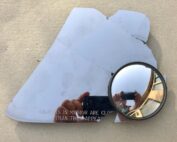UCSD study: Researchers Discover Potential Microbiome Links to Skin Aging
VIA UC SAN DIEGO TODAY | January 11th, 2024
The effects of aging and external factors like UV exposure on skin are well documented. As people age or spend more time in the sun, their skin tends to become drier and more wrinkled.
Recent findings have identified an exciting potential new link to signs of skin aging—the skin microbiome, the collection of microorganisms that inhabits our skin. The results come from a collaborative study carried out by researchers at the Center for Microbiome Innovation (CMI) at the University of California San Diego (UC San Diego) and L’Oréal Research and Innovation.
Their work was published in Frontiers in Aging on January 11, 2024, in an article entitled “A multi-study analysis enables identification of potential microbial features associated with skin aging signs.” To the best of the team’s knowledge, the study is the first to isolate microbes associated specifically with signs of skin aging and skin health, rather than chronological age.
Combining CMI’s sophisticated data analysis abilities with L’Oréal’s knowledge and expertise in skin health assessment, the study comprehensively examined data collected during 13 studies that L’Oréal had carried out in the past, consisting of 16S rRNA amplicon sequence data and corresponding skin clinical data for over 650 female participants, aged 18 – 70. While each of the studies included in the analysis had focused on one particular area of interest—for example, crow’s feet wrinkles or moisture loss—this multi-study analysis collated the data to search for trends related to specific microbes while accounting for other variables, such as age.
Combining CMI’s sophisticated data analysis abilities with L’Oréal’s knowledge and expertise in skin health assessment, the study comprehensively examined data collected during 13 studies that L’Oréal had carried out in the past, consisting of 16S rRNA amplicon sequence data and corresponding skin clinical data for over 650 female participants, aged 18 – 70. While each of the studies included in the analysis had focused on one particular area of interest—for example, crow’s feet wrinkles or moisture loss—this multi-study analysis collated the data to search for trends related to specific microbes while accounting for other variables, such as age.
To read remainder of the story, click link to the UCSD website here.















